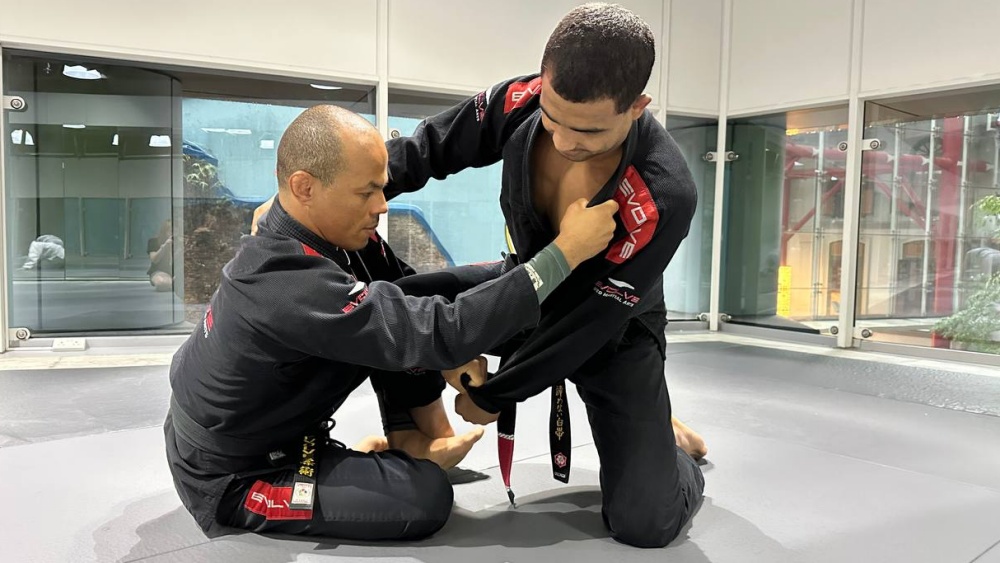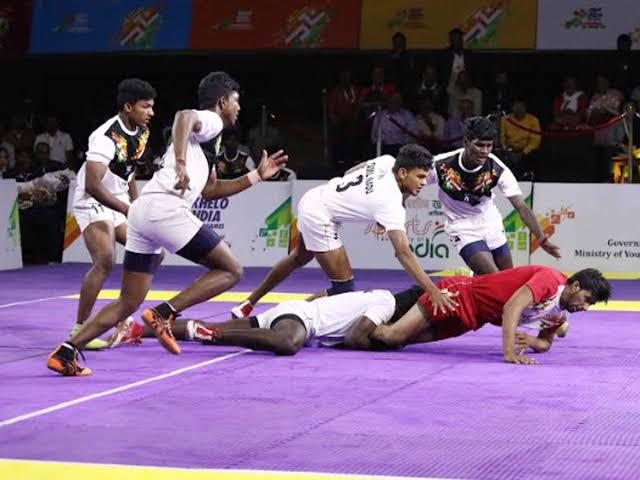
Brazilian Jiu-Jitsu is a constantly evolving martial art. Over the years, practitioners have continually searched for ways to improve their ability to control, sweep, and submit opponents. Among the many guard variations available, the shin-to-shin position is a recommended technique due to its strong control and relative ease of use. It provides an excellent entry point for sweeps and leg attacks while also serving as a reliable defensive guard. Understanding how to use this position properly can significantly enhance your overall game. In this article, we’ll go over the shin-to-shin position in Jiu-Jitsu.
What Is The Shin-To-Shin Position?
The shin-to-shin guard is an open guard variation where the bottom player places their shin against the opponent’s shin while maintaining a seated or slightly reclined posture. The position often involves controlling the opponent’s leg with one hand while gripping their sleeve, collar, or foot with the other.
A common setup for the shin-to-shin position involves engaging an opponent who is attempting to pass standing. By placing your shin against their shin, you create a strong connection that allows you to off-balance them and set up sweeps or transitions to stronger positions, like the single leg X guard, deep half guard, or even wrestle-ups. This position is particularly effective for smaller grapplers looking to neutralize stronger opponents.
Defensive Properties Of The Shin-To-Shin Position
One of the most important aspects of the shin-to-shin guard is its defensive properties. Since it allows a grappler to control and dictate movement, it becomes harder for an opponent to aggressively pressure or pass. By keeping your shin against the opponent’s shin, it effectively creates a barrier that prevents them from stepping forward and solidifying a dominant passing position.
Another important point is that the shin-to-shin position allows a BJJ player to stay mobile rather than being forced into a static defensive position like closed guard. This mobility makes it easier to create angles and escape from bad situations if needed. If an opponent tries to pressure through or push past the shin-to-shin guard, the bottom player can use their grips and hooks to create distance and regain control.
This position also limits the opponent’s ability to apply pressure, making it harder for them to set up passes. This makes it a useful defensive tool, especially when dealing with larger opponents who like to smash their way through your defenses.
Other Benefits Of The Shin-To-Shin Position
On top of its defensive capabilities, the shin-to-shin has other benefits that make it an essential tool to use. One of its biggest advantages is its versatility, as it works well in all types of grappling rulesets. Even in MMA, the shin-to-shin can be used effectively for as long as you keep your head safe from strikes.
Another key benefit is that it serves as an excellent connection point for transitions. From the shin-to-shin guard, a practitioner can easily transition into other open guard variations that allow for sweeps and attacks. This means that even if a direct sweep attempt from shin-to-shin fails, it still provides a seamless way to flow into a more dominant guard position.
The shin-to-shin guard is also effective for initiating leg attacks. Because of its emphasis on controlling one of the opponent’s legs, it naturally leads into ashi garami, where the practitioner can look for leg submissions.
Examples Of Shin-To-Shin Applications
The shin-to-shin guard is most commonly used for sweeps and transitions. One of the most effective sweeps from this position is the shin-to-shin single-leg sweep. The bottom player controls the opponent’s leg, uses their own shin as a hook, and drives forward while lifting the opponent’s foot. This off-balances the opponent, making it easier to finish the sweep and come up to a strong position.
Another great application of the shin-to-shin position is its ability to enter single leg X guard (SLX). By using the shin-to-shin hook to elevate the opponent’s leg, a practitioner can transition seamlessly into the SLX, where various attacking options are available.
In addition to sweeps, the shin-to-shin guard allows for easy entries into leg locks. With proper control of the opponent’s leg, the practitioner can transition into various forms of ashi garami, which can lead to quick and devastating finishes.
Adding Shin-To-Shin As A Piece Of The Puzzle
While the shin-to-shin guard is an excellent tool, it should not be used in isolation. Instead, it should be incorporated into a broader guard system. Grappling, in general, is all about connectivity. Each position should flow into the next seamlessly, allowing a practitioner to constantly threaten their opponent.
By understanding how to connect the shin-to-shin guard with other positions, a practitioner increases their effectiveness and adaptability in matches. Instead of relying on a single position, they develop a chain of movements that keep them one step ahead of their opponent.
Drilling And Practicing The Shin-To-Shin Guard
Like all aspects of BJJ, mastering the shin-to-shin guard requires consistent drilling and live training. Repetitive entries into the shin-to-shin position to build muscle memory. This involves starting from a neutral seated position and establishing the shin-to-shin connection efficiently.
Drilling sweeps and transitions from the shin-to-shin guard. Practitioners should practice moving into SLX, deep half, or finishing the shin-to-shin sweep multiple times. Positional sparring, where the goal is to use the shin-to-shin guard against a resisting opponent. Limiting training to specific scenarios will help reinforce the effectiveness of the position.
By regularly incorporating these drills, a practitioner can refine their ability to execute sweeps, set up attacks, and defend against pressure passes from this position.
Conclusion
For grapplers looking to develop a well-rounded guard, adding the shin-to-shin position is guaranteed to add a more nuanced layer to their game. It is a position practically anyone can do and is an excellent addition to a developing guard game. We recommend that you experiment with the position and see what it can bring to your Jiu-Jitsu.
You may also like:
5 Ways To Get The Back Control From The Standing Position
Brazilian Jiu-Jitsu is always evolving, with grapplers constantly finding new ways to blend techniques. Two skills that have gained popularity in modern No-Gi grappling are wrestle-ups and leg locks. At first glance, they seem like…
The back is the most dominant position in grappling sports such as Brazilian Jiu-Jitsu, Submission Grappling, and Mixed Martial Arts, both in the stand-up and on the ground (back mount). In the stand-up, it allows…
Becoming a great fighter in martial arts requires more than strength, speed, or endurance—you must also be smart. While most martial artists typically aren’t viewed as the most cerebral members of society, there are clear…
The phrase “iron sharpens iron” is commonly used in Brazilian Jiu-Jitsu circles, and there’s a lot of truth behind it. While rolling with a higher belt can be intimidating as a white belt who hasn’t…
BJJ is a journey filled with ups and downs at every stage of development. At times, progress comes quickly, and techniques flow effortlessly. Other times, it can feel like you’re stuck in place, seemingly unable…
Brazilian Jiu-Jitsu has always been a martial art rooted in evolution and adaptation. From its early days of self-defense to its current status as a premier grappling sport, BJJ has undergone numerous transformations. One of…
Combat sports like Brazilian Jiu-Jitsu, Muay Thai, boxing, wrestling, and MMA push athletes to their physical and mental limits. Success in these disciplines doesn’t just come from skill and conditioning but also from proper nutrition….
Combat sports demand a fluid synergy of raw power, speed, mobility, balance, and agility. Animal movements are one of many ways fighters can strengthen their bodies to perform optimally. These exercises involve mimicking the movements…
Have you ever heard that voice that says, “Maybe I should get my backside off the couch and do something cool?” MMA could be the fun new activity you’re looking for. No, training won’t turn…
Finally, the school holidays are around the corner! Busy parents, don’t tear your hair out if your children are at home. There are more ways to keep them entertained besides Netflix’s selection of children’s TV…
Martial arts training is intense. It demands strength, endurance, flexibility, and mental focus. Whether practicing Brazilian Jiu-Jitsu, Muay Thai, boxing, wrestling, or MMA, the sheer physical and mental exertion required takes a toll on the…
Running has historically been a considerable portion of many martial arts fighters’ training regimens, but it’s not the only way to get your heart pumping and build up your cardiovascular endurance. Many non-traditional workouts challenge…



































